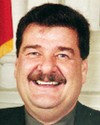Mr. Speaker, I am very pleased on behalf of the NDP to join the debate on Bill C-2 and, unlike the previous speaker, I welcome the opportunity to speak to the bill because the NDP caucus is very much in support of Bill C-2.
We have watched with great interest and great care as we have gone through the various aspects of Yukon governance for aboriginal people, the first nations communities in Yukon. We see this as a logical next step as we implement the first nations self-governance in Yukon and give them greater control over their resources, their land base and the issues for which they very much deserve to have a voice.
Bill C-2, otherwise known as the Yukon environmental and socioeconomic assessment act, is a proposed federal statute that has been developed pursuant to chapter 12, the development assessment process, of the Yukon first nations final agreement, the umbrella agreement that was arrived at in the process of negotiating first nations self-governance. This is something we have been looking forward to and welcoming for quite a number of years.
The purpose of the Yukon environmental and socioeconomic assessment act is to ensure that the potential environmental and socioeconomic effects of projects are assessed prior to any level of government, federal, territorial or first nations, deciding whether it should be or should not be allowed to proceed.
For clarity we should know what we are talking about. I am not sure that the previous speaker from the Canadian Alliance actually ploughed through the very lengthy briefing book that we have here. He seemed to be raising issues that had very little to do with this important bill.
The process of assessing the effects of a project will be referred to as the assessment process while the process of deciding whether a project should go ahead will be referred to as the regulatory process. We should have those two avenues clear in our mind as we go into greater depth in our analysis of the bill.
It is actually critical to note that the leadership of the Council of Yukon First Nations wholly supports the bill at this time. This should be all that we need to know as parliamentarians in the federal House of Commons. Once we are satisfied that broad consultation took place among the stakeholders and once we are satisfied that the very people who would be most directly affected by the bill are satisfied with it, who are we to stand in the way of the bill moving through the various steps and being implemented into law? We could view it as arrogance to do otherwise and certainly as cheap politics to score political points for things that are entirely unrelated.
We would do a great disservice to the people of Yukon and certainly the first nations of Yukon if we were to ignore the representations they have made and the work they have done to put together Bill C-2 and to get it to the stage where we find it today.
I mentioned that we wanted to be satisfied that there has been broad public consultation, which is something I will deal with in more depth later, but we are satisfied in this case. In fact we could almost use this as a template model for how consultations should take place if we are serious about garnering real input and real representation from various groups. If we look at what they have done in Yukon over the past five or six years leading up to this particular bill, that is a process that we should be using for other legislation as well.
I note that there were two major rounds of complete touring consultation throughout Yukon. There was one for 90 days that went to every community and first nations village throughout the whole Yukon. Every first nations community not only had an opportunity to send in written submissions on draft one but each community had an opportunity to have an open public hearing in its community.
Taking what they had heard in that initial consultation process, the drafters of the legislation, the tripartite committee that was struck to put this together, took back what they heard, implemented those changes and went for another exhaustive tour around the whole territory two years later with draft two, which I believe was a 60 or 70 day exhaustive tour.
I do not think anyone here could safely say that there was not adequate consultation, nor that the input during those sessions was disregarded or not treated with the respect that it deserved. We are satisfied in this case that genuine consultation did take place and led to what we think, as I have said at the outset, is a very worthy document.
As I mentioned earlier, we have two separate routes here. We are dealing first with the regulatory process and the assessment process. Dealing with the assessment bodies, as to who will make the assessment, the Yukon environmental and socioeconomic development act would establish the Yukon environmental and socioeconomic assessment board. It would also establish six designated offices located throughout Yukon. Again, what could be viewed as a model of decentralization, this board would not be concentrated solely in Whitehorse. There would be an opportunity to have fully staffed offices spread throughout the Yukon in the regions of the north.
The board would be made up of seven members, three of whom would make up the executive committee. The Council of Yukon First Nations and Canada would each nominate one member to the executive committee. The hon. member from the Canadian Alliance, the Indian affairs critic for the Canadian Alliance, said that this could make room for patronage appointments, that there may be an opportunity for abuse in the composition of this board. This was dealt with in the early stages. How this board will be struck will be critical for the ongoing success of the operations of the board and how it will be constituted has been set out in Bill C-2.
The CYFN, the Council of Yukon First Nations, and Canada would each nominate one member of the executive committee. The Minister of Indian Affairs, after consulting with the two other executive committee members, one of which, as I have said, would be nominated by the Council of Yukon First Nations, would select the third executive committee member who would be the chair of the board. I do not see room for abuse in this process unless the hon. member from the Alliance sees something that I am not seeing.
Two of the four remaining board members would be appointed also by the Council of Yukon First Nations, while the others would be appointed, one by Canada and one by the government of Yukon. If there is room for abuse or a patronage appointment, it would be for one member of the seven member board. I am not here to say that kind of patronage appointment never happens. Maybe the Government of Canada or the ruling party of the day will use some kind of a patronage appointment but it will only be for one board member because the possibility has already been contemplated and it has been nipped in the bud. It has been eliminated given the structure of the committee that is laid out in Bill C-2.
I admire the Alliance member for raising the possibility of patronage appointments but our caucus is satisfied that there is no such room for abuse in this particular process. Therefore that is not one of the justifiable grounds for trying to block or to stall this important bill.
Under the Yukon environmental and socioeconomic development act, the board may establish panels to conduct panel reviews. These panels must be made up from board members. Again, I do not understand where the room for abuse comes from.
One of the features that I particularly like about the bill is that six small communities would have designated offices, although I am not sure which six communities would have them. I presume Dawson City would be one and possibly Old Crow, Teslin, Tagish and Mayo the other ones. I am not sure which communities would get these various offices but they will be located in each of the assessment districts.
It is easy to say that Ross River and area could be considered one development area. Certainly the Dawson City area and the gold fields, et cetera, is another with the mining interests in that area. Haines Junction and the far western part of Yukon might be considered another area. However the boundaries of the assessment districts and the location of these designated offices would be worked out in the implementation phase of the YESAA.
On the board's recommendation, the number of designated offices and the assessment districts can be increased or decreased to meet operational requirements. In other words, flexibility is built into the bill so that we can increase or decrease the number of regional offices to meet the various application demands that may be put forward.
The logical question is: What sort of activities would be subject to assessment? I believe the Alliance member was fearmongering when he said that some business venture may come forward and have its project nipped in the bud by this new authority in Yukon that may scare away investors and turn down their applications. If the member had read the briefing book or perhaps listened he would know the sorts of projects that would be subject to assessment and what project's assessment would be waived, deemed unnecessary or exempted from the assessment process.
The project list regulator will be the body that will determine which activities are subject to assessment and which ones are not. The goal of the PLR is to catch those projects which pose a potential risk to the environment and/or socioeconomic impacts while ensuring that activities which do not pose any risks are exempted.
In other words, if there is no environmental or socioeconomic risk to the activity that is being proposed, it does not have to be subject to an assessment review. It is only activities or enterprises which do pose an environmental risk or a socioeconomic impact on Yukon that would be subject to the assessment. I do not see how that differs from the current status quo, which is the Canadian Environmental Assessment Act as it stands today, which this bill will supercede once it is implemented.
Under declarations, the parties recognize that there may be some activities that do not pose any risk under normal circumstances but, because of special conditions, the risk may be increased and therefore the activities should be assessed. The type of things they are getting at there are culturally sensitive issues, issues that have a social impact as much as an economic impact and as much an environmental impact.
To address that, Bill C-2 provides for exempted activities to be declared where any level of government with authority for the activity is of the opinion that there is a risk of impact. This again is contemplated and a clear course of action is laid out within Bill C-2 that might be dealt with if necessary.
If several governments are decision makers for a project, they must all consent before an activity is declared to be a project. This is intended to allow an activity that would not normally require an assessment to be assessed if there are particular concerns. For example, if it were to be carried out in a sensitive area or if there were issues of cumulative impacts that were not part of the original activity or enterprise.
The entry point also is pointed out or itemized and assessed in Bill C-2 that most projects will enter the assessment process at the designated office level in the region in which the enterprise will take place. A small number of large or complex projects will enter into the assessment process directly at the executive committee and will not undergo any assessment by a regional office. This would have seemed logical, quite straight forward and easy to follow had the people debating the bill today actually gone through the briefing notes.
When the designated office makes an evaluation on a project, it will be subject to further review from the central board as to whether it should immediately go ahead, whether it should go ahead with specific terms and conditions, whether it should be barred or whether it should be referred further to the executive committee for its recommendation as well. The executive committee has an alternate screening role. The projects that are submitted to the executive committee will be screened again for the same four tests. The committee ultimately can order that perhaps the project should go to a public panel review or some other form of public consultation review.
As members can see, this is perhaps why the bill took a number of years to get to this stage. It is very complex and it is difficult to foresee all the possible implications or possibilities that might come forward and to deal with those eventualities.
The boards and the bodies can issue documents allowing a project to go ahead without any further review. I do not think I will deal with those technical aspects any longer because I am aware of the time limitations.
I will try to answer the question in which most people in the House should be interested, which is this. What will the Yukon environmental and socio-economic assessment act mean for Yukon first nations? That ought to be the ultimate question with which we should be dealing today and with which we should be seized.
We believe that Bill C-2, or the YESAA, will fundamentally change the role of first nations in environmental assessment in Yukon. Perhaps that is really more to the point to which the member from the Canadian Alliance was objecting. We have noticed a pattern with the aboriginal affairs critics from the Canadian Alliance systematically opposing every move toward true self-governance for aboriginal people and systematically trying to cite reason after reason why aboriginal people should not be given the next stage in their own self-determination.
We believe this will change the role of first nations in environmental assessments in Yukon because under the current assessment regime, the Canadian Environmental Assessment Act, first nations have had very little opportunity to participate in any meaningful way with these environmental assessments. Under Bill C-2 they will play a much larger and more significant role.
Some of the issues of serious concern to first nations such as the socioeconomic and cultural effects, which were not given any consideration under the Canadian Environmental Assessment Act, will be a very important part of every assessment under the new YESAA.
For further clarity, under the YESAA, assessments will now be conducted by neutral assessment bodies rather than by self-assessment by government alone. This is a fundamental change. This will be an independent board made up by stakeholders nominated by first nations and the other players, the federal and territorial governments themselves. These issues will be dealt with by the board rather than by the government itself, which obviously led to a certain conflict of interest.
The assessment bodies must seek the views of any first nation that will be affected by the project. In other words, the mandatory consultation process is built in here. It will not be left subject to the courts. It will not be required to be heard. A first nations community would have to seek legal redress and demand to be heard. That process is built into Bill C-2, much to the satisfaction of the people involved.
Also integral part of Bill C-2 is that every existing project must consider as an aspect of going ahead the need to protect first nations rights under the final agreements, under the umbrella agreement. In other words, there can no longer be any doubt, and we do not have to go to the courts again, that any developer must consider first nations' rights when they undertake an enterprise.
We have had recent court rulings like the Haida ruling in B.C. dealing with forestry issues. For the government to do any development affecting first nations and treaty rights, the consultation process is necessary. However up until today third parties, business enterprises, did not necessarily have to take into full consideration treaty rights of first nations people that might be affected by the economic enterprise being undertaken. Now, under Bill C-2, for any future development of Yukon, it is mandatory and binding that the need to protect first nations' rights under final agreements, or first nations' special relationship with the wilderness environment or first nations cultures, traditions, health and lifestyles must be taken into consideration before a permit will be issued for that development or that enterprise within Yukon.
Also within Bill C-2, one of the biggest changes for first nations people in Yukon, is that both assessment bodies and other bodies must give full and fair consideration to traditional knowledge. The words traditional knowledge show up in Bill C-2, as do references to culture, tradition, health, lifestyle and first nations' special relationship with their wilderness environment. There has never been a document so culturally sensitive when it comes to first nations people as this bill, so it is shocking to me to hear any major party in the House of Commons speak openly that it cannot support it.
This is breaking new ground. This is forging a whole new path for our relationship with aboriginal people and economic development. If we hear every party in the House of Commons saying that the answer to the atrocious conditions is economic development, well here is the acceptable road map as negotiated between the affected stakeholders in Yukon by which such economic development can and shall take place with sensitivity toward the special relationship to the wilderness environment, the cultural, the economic, the traditional, the health and the lifestyle issues that any such enterprise might affect.
As well the assessments of every project and existing project must consider the potential environmental and socioeconomic effects which include effects on economies, health, culture, traditions, lifestyles and heritage resources of the project. In other words, if a mining enterprise might interfere with a traditional fishery, even if one is of a much larger magnitude than the other, the traditional enterprise must be taken into consideration before the new economic development enterprise is given a permit and allowed to go forward. That was not the case.
That might seem like common sense but up until today, until we pass Bill C-2, that has not been the case. That is why we have a backlog of 200 such cases before the courts today. The only redress aboriginal people have, if they want consideration of those cultural issues, is to go to court and fight for it, unless someone voluntarily recognizes their right to have those traditional issues recognized.
Another effect of Bill C-2 is that the participation of Yukon Indian people in the assessment process is guaranteed. It is not something that will be granted when it is not an inconvenience and be withheld when it is inconvenient. It will be guaranteed.
Federal and territorial decision bodies much consult with the first nations without final agreements. In other words, those first nations within Yukon that are not members of the Council of Yukon First Nations, and there are some, must be satisfied as well. They are being folded into this umbrella deal. Maybe that is the wrong term because we refer to the Yukon self-government act to this day as the umbrella framework agreement. However those first nations who are not currently members of the Council of Yukon First Nations will have their concerns dealt with as well. I think they are the Kaska and the Kwanlin Dun, and there may be others. I believe that 9 out of the 14 first nations are members of the Council of Yukon First Nations.
Some, for whatever reasons, are not currently members of that plenary organization. They may be in the future but in the interim federal and territorial decision bodies must consult with the first nations that are not part of any final agreements so far, before issuing decision documents for projects that will affect their traditional territories. In other words, some activity or enterprise could take place on areas where current claims are in effect. That would be wrong and might jeopardize future negotiations and the settlement of those claims. We all believe that it is in everyone's best interests to have those claims settled and nothing that takes place should interfere with the progress being made as we work to finish those negotiations.
Self-governing first nations will be decision bodies with respect to projects on settlement land. This is a whole new status. This contemplates that we have to get our minds around a whole new way of dealing with economic development on first nations land, and that is where Bill C-2 breaks new ground. It really shows us a template, a model, which has been arrived at through an exhaustive consultation process and it shows us perhaps a template for future settlements in other parts of Canada. Maybe it is a good thing.
Earlier today I met with the representatives of the Council of Yukon First Nations and said that perhaps the reason that we arrived at such a civilized, thorough, comprehensive and almost unanimously accepted document is that Yukon is kind of a nice, manageable size. Yukon is almost a microcosm of the rest of Canada when it comes to relationships between first nations and the federal government. Maybe because the population is small and manageable enough we have done it here as a template, as a pilot project, and perhaps this model will work in future negotiations as well.
The implementation of the Yukon environmental and socio-economic assessment act or Bill C-2 is structured in such a way that part 1 will come into force on royal assent while parts 2 and 3 will come into force up to 18 months later. This will allow the parties to make appointments to the board early on so that the board can begin to develop and put in place rules and bylaws, hire staff for the board in designated offices, et cetera. After 18 months or less the actual assessment process will come into place. Therefore, it is fair to say that no new projects will be developed in Yukon under the rules of the new assessment act until some time in 2004.
I began my remarks by saying that Bill C-2 finds its origins in chapter 12 of the umbrella framework agreement. It is instructive to those who perhaps have not dealt with this bill very much to realize what tests have to be met for Bill C-2 to truly reflect the details of chapter 12 of the umbrella framework agreement. The chapter was to provide for a development assessment process that recognized and enhanced, to the extent practicable, the traditional economy of Yukon Indian people and their special relationship with the wilderness environment.
The directive was to put in place a development assessment process that provided for guaranteed participation by Yukon Indian people and utilized the knowledge and experience of Yukon Indian people in the development assessment process. Does Bill C-2 meet that test? I argue, upon reading the bill, that yes it does.
Does Bill C-2 meet the test that we need a process which protects and promotes the well-being of Yukon Indian people and their communities, of other Yukon residents and the interests of other Canadians? Does it meet that test? Again we are satisfied that, after an exhaustive consultation process of all stakeholders, there is unanimous consensus virtually that yes in fact Bill C-2 does promote and protect the well-being of not only Yukon Indian people and their communities but of other Yukon residents as well and the interests of other Canadians in general.
Does Bill C-2 protect and maintain environmental quality and ensure that projects are undertaken in a manner consistent with the principles of sustainable development? That is what the bill is about. The very substance of the bill is that it must be in keeping with the principles of sustainable development but with special consideration of the cultural, traditional and unique relationship that first nations have with the land.
Does Bill C-2 protect and maintain heritage resources? Bill C-2 specifically refers to heritage resources. Again, it is groundbreaking and precedent setting legislation that takes into consideration those intangibles, things that do not necessarily have a large market economy value, but have value in the traditional lifestyles of aboriginal people.
Does Bill C-2 provide for a comprehensive and timely review of the environmental and socio-economic effects of any project before the approval of the project? Contrary to what the member from the Canadian Alliance was saying, yes it does. It has guidelines and time frames. We will not have cases where a development application is held up for years and years. That is the status quo. That is what we have now. We might have a mining enterprise that wants to start an operation 60 miles outside of Dawson City and it might wait five years for all the various assessments to take place such as the water surface assessments, the transboundary assessments and the exhausting assessments that need to take place.
What would take time, what would bog down and bury a number of economic development projects in Yukon is if Bill C-2 were to wind up in the courts. What if the first nation community that is close by says that this enterprise fails to take into consideration its historic right to have input into this project and it takes two or three years for the courts to deal with that case?
That is when venture capital runs scared because venture capital seeks stability and a process that it can trust and rely on, with a known timeframe to get an answer of whether the project will be reviewed or not.
Bill C-2 would give that satisfaction and that comfort to investors, that at least there is a mechanism in place that would not be challenged in the courts and that within a specific timeframe they would get an answer as to whether the project should or would go ahead or not.
Does Bill C-2 provide for a comprehensive and timely review of the environmental and socio-economic effects of any project before the approval of the project?
Again, to meet the tests of finding its origins in chapter 12 of the umbrella framework agreement it has to. The experts in the field, many of whom are in the gallery watching today, the people who have spent the last seven years developing this, are satisfied that Bill C-2 would meet this test, that it would provide for a timely review of the environmental and socio-economic effects of any project before the approval of the project.
Will Bill C-2, upon its introduction, avoid duplication in the review process for projects? This is an issue that was put forward on behalf of the developers and business interests that may be affected.
Does this avoid duplication in the review process for projects and, to the greatest extent practicable, does it provide certainty to all the affected parties and project proponents with respect to procedures, information requirements, time requirements and costs?
These are key questions that need to be answered before economic development venture takes place in Yukon.
We are satisfied again that Bill C-2 is comprehensive enough in its scope and its mandate that these pressing questions would be addressed, the business community can feel comfortable that these issues are addressed and that all affected parties and project proponents would be satisfied that the duplication of procedures, information requirements, time requirements and costs would be of be avoided with Bill C-2.
Will Bill C-2 require project proponents to consider the environmental and socio-economic effects of projects and project alternatives and to incorporate appropriate mitigative measures in the design of projects?
I will leave that one up to the experts who have reviewed these cases. They are satisfied that Bill C-2 would address that concern and that those are the objectives of chapter 12 of the umbrella framework agreement that must be met in order to call Bill C-2 an accurate reflection of that chapter.
We in the NDP caucus believe that a large part of the success of reaching consensus with Bill C-2 is due to what we are pleased to point to as the most comprehensive consultation process that we know of in issues dealing with aboriginal affairs.
It is a point of legislation that with any government legislation implemented that may affect or may have an impact on treaty rights, or traditional rights, or the constitutional rights, or even the common law rights of aboriginal people, there must be a round of consultation. However the confusion has come, and it has again come to a head under the first nations governance act, or as the aboriginal affairs standing committee deals with the first nations governance act, just what is broad consultation? What is the definition of broad consultation? What satisfies the tests of having been fairly and adequately consulted if that is what is mandated in the legislation?
I would like to speak to that briefly because we believe if the fruit of genuine consultation is a quality piece of legislation, such as Bill C-2, then what can we anticipate with Bill C-7, the first nations governance act, with a consultation process that all parties agree is largely flawed, incomplete and less than comprehensive?
It is instructive to look at the principles of consultation and see if they were met in the consultation leading up to Bill C-2. Can we look at the methodology used for consultation in Yukon and find the formula, the recipe, and the methodology that could be implemented elsewhere?
I should start by saying that aboriginal people, through their first nations plenary organizations, such as the Assembly of First Nations, have some specific and definite thoughts as to what constitutes genuine consultation. In their view it is key and paramount and fundamental, in a true consultation process, that there be no predetermined agenda brought to the table. In other words if it is a genuine consultation, if one is really seeking the input of the people that one is asking their opinion of one does not put an agenda on the table and say, “How do you like it?” The agenda is developed jointly. The parties, together, fashion the agenda.
I believe that is one of the things that was met in the Bill C-2 consultation process because they did not shop a finished document around. They took draft documents to the people, they listened to the input that they received, they took that input back and they implemented it into draft 2, draft 3, et cetera.
Another basic tenet for fair consultation is that the parties comprise federal and first nations governments meeting on a nation-to-nation, government-to-government basis. In other words, the historic imbalance in the power relationship between those two parties must be set aside for the consultation to be viewed as genuine, sincere and meaningful.
A third basic tenet would be that the parties exchange information, views and comments as equals and conduct their business with mutual respect and in good faith. There have been books written on what it means to negotiate in good faith. I do not have to cite the leading authorities on those legal definitions. In the House we all know what good faith means.
With regard to Bill C-2 and the consultations leading up to it, I have not heard anything in my experience after meeting in Yukon with the Council of Yukon First Nations and now meeting today with representatives from the Council of Yukon First Nations that would indicate that there was anything but good faith in the consultation process.
These consultations should be open and agreements be openly arrived at. In other words, there should be no selective or private side meetings, for example. If we are comparing a good consultation process with a flawed consultation process, like we saw in the first nations governance agreement, that is exactly what happened.
When the minister was finding that he was not hearing what he wanted to hear at the open consultation meetings, a bunch of side deals were made and groups were split off and hived out of communities. They were offered financial incentives to cooperate with the consultation process or even threatened with financial punishment if they failed to cooperate with it. That should stand as an example of what we do not want to see in present or future consultation processes.
Another basic requirement should be that first nations obtain and be given the fullest information to enable them to make sound and reasoned judgments.
The NDP caucus is satisfied that Bill C-2 is a bill that is worthy of our support. We see it as another step toward the realization of a dream for aboriginal people, for first nations communities in Yukon who are seeking self-determination and true self-government. The management of their own land and resources is key and integral to true self-government. Bill C-2, by putting the board in charge of the environmental assessment of developments, would go a long way to putting them in charge of the actual development of those resources.























